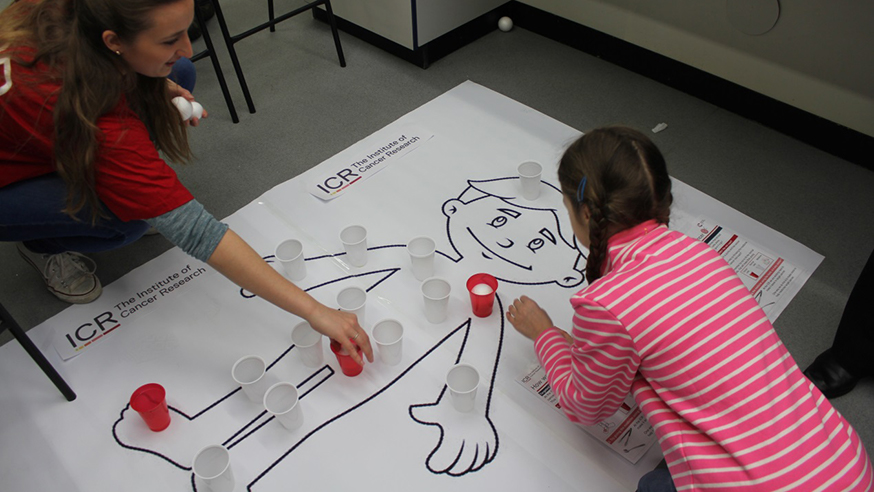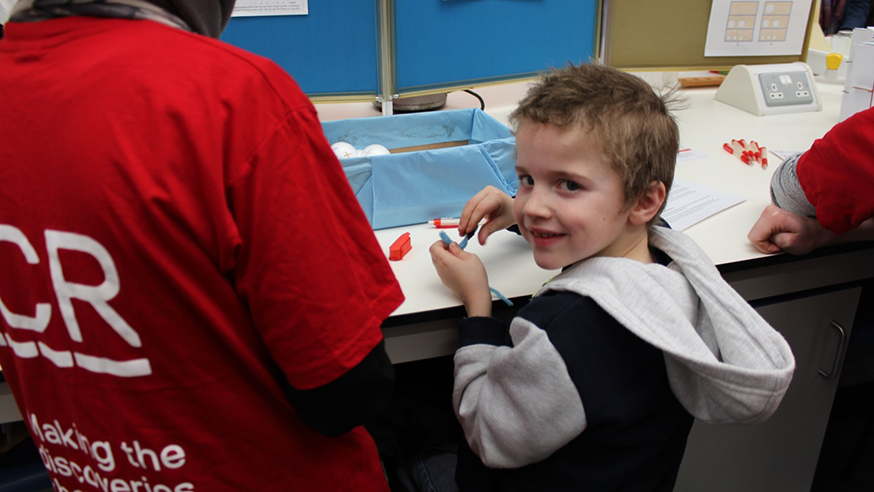
“Can you think like a cancer scientist?”
This was the question I and a group of volunteers from The Institute of Cancer Research, London, posed to children at the Royal Holloway Science Festival on Saturday 5 March 2016.
The festival has been running for more than 20 years and the ICR has attended over the last few years as a special guest. This year the theme for the festival was “let science inspire you” – and it did not disappoint.
This was the first time I had volunteered at the science festival and I was working alongside a 12-strong team of staff and students from the ICR. Together, over the preceding months, we had developed a number of exciting and engaging activities which demonstrated the work of scientists at the institute.
We’d decided to look back into the ICR’s history to create activities that celebrated the inspirations behind discoveries.

The first team were inspired by the ICR’s history developing personalised medicine, and targeted drugs. They made an almost life-sized cut-out of a cancer patient, studded with white and red cups that represented healthy or diseased cells.
Visitors were asked to throw polystyrene balls into the cups – hitting the red, and avoiding the white. They were then given tongs to place their balls in the cups – explaining that precise targeting makes it easier to bring drugs to where they need to go.
The second team looked back to the ICR’s work on precision radiotherapies. They developed an activity where a silver pinboard served as a linear accelerator, and participants marked out their treatment plans with string and push-pins.
I was involved in demonstrating some techniques that researchers routinely use in labs: antigen- antibody interaction and gel electrophoresis.
In these activities, children were able to make their own antibodies and go ‘fishing’ for antigens. They then ‘ran a gel’ so they could learn how scientists identify proteins and DNA by using gel electrophoresis, introducing the principle of separation by size and charge.
I was impressed by how many children were able to answer some challenging scientific questions and amused by their descriptions when asked what an antibody looked like (‘a catapult’, remarked one aspiring Dennis the Menace with confidence).
I was able to speak with some older children about the career options that are available after studying science in further and higher education.

We discussed the nature of various branches of science and their importance in the work of the ICR, from biology and medicine to statistics and bioinformatics. Plenty of adults were keen to engage in conversation about new cancer treatments that they had heard about through media or their own personal experiences.
Overall, I felt that the day gave the opportunity for children to get involved in creative activities, while learning to think scientifically. All the children I spoke immersed themselves in the games and their various approaches reminded me of what it is to be a scientist; children were pensive in their problem solving, many were competitive and all seemed to really enjoy the challenges at the ICR stand.
When volunteering at the Royal Holloway Science Festival, I set out to inspire the next generation of scientists. However, by the end of the festival, I found that it was the children’s energy and enthusiasm for the activities which inspired me.
comments powered by